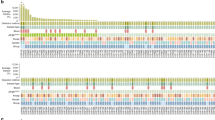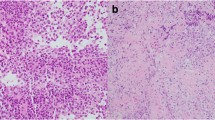Abstract
The goal of the study was exploring the range of variants of the PRL, PRLR, and PRLHR genes in women of reproductive age with nontumor hyperprolactinemia. In women with hyperprolactinemia of nontumor origin (n = 15) targeted high throughput sequencing of PRL, PRLR, and PRLHR genes was performed. The targeted panel of genes included coding regions and adjacent splicing sites. Analysis of the PRL, PRLR, and PRLHR genes revealed a number of rare and common variants. In the PRL gene, the common variant rs1205955 was identified (MAF А = 0.279). For the PRLR gene, the rare variant rs185353023 was identified in the 3'UTR (MAF A/C = 0.003) and 12 common variants were detected. For the PRLHR gene, ten common variants were identified. The maximum number of variants was localized in the 3'UTR region and introns. For the first time in Russia, targeted high throughput sequencing of the PRL, PRLR, and PRLHR genes was performed, according to the results of which no obvious pathological variants were revealed in the studied genes in women with an increased content of nonneoplastic prolactin. The discovered polymorphism in these genes allows further study of its association with impaired function of the prolactin component of hormonal regulation.
Similar content being viewed by others
REFERENCES
Abe, T., Koga, N., Tomita, M., Tonoike, T., Kushima, M., Takahashi, K., Sano, Y., and Taniyama, M., Cellular localization of prolactin-releasing peptide receptors in the human pituitary, Acta Neuropathol., 2003, vol. 106, p. 495. https://doi.org/10.1007/s00401-003-0753-7
Abramicheva, P. A. and Smirnova, O. V., Prolactin receptor isoforms as the basis of tissue-specific action of prolactin in the norm and pathology, Biochemistry (Moscow), 2019, vol. 84, p. 329. https://doi.org/10.1134/S0006297919040011
Ben-Jonathan, N., LaPensee, C. R., and LaPensee, E. W., What can we learn from rodents about prolactin in humans?, Endocrinol. Rev., 2008, vol. 29, p. 1. https://doi.org/10.1210/er.2007-0017
Bernard, V., Young, J., and Binart, N., Prolactin—a pleiotropic factor in health and disease, Nat. Rev. Endocrinol., 2019, vol. 15, p. 356. https://doi.org/10.1038/s41574-019-0194-6
Bernard, V., Young, J., Chanson, P., and Binart, N., New insights in prolactin: pathological implications, Nat. Rev. Endocrinol., 2015, vol. 11, p. 265. https://doi.org/10.1038/nrendo.2015.36
Birla, S., Khadgawat, R., Jyotsna, V.P., Jain, V., Garg, M.K., Bhalla, A. S., and Sharma, A., Identification of novel PROP1 and POU1F1 mutations in patients with combined pituitary hormone deficiency, Horm. Metab. Res., 2016, vol. 48, p. 822. https://doi.org/10.1055/s-0042-117112
Carlomagno, Y., Salerno, M., Vivenza, D., Capalbo, D., Godi, M., Mellone, S., Tiradani, L., Corneli, G., Momigliano-Richiardi, P., Bona, G., and Giordano, M., A novel recessive splicing mutation in the POU1F1 gene causing combined pituitary hormone deficiency, J. Endocrinol. Invest., 2009, vol. 32, p. 653. https://doi.org/10.1007/bf03345736
Chang, S. and Copperman, A.B., New insights into human prolactin pathophysiology: genomics and beyond, Curr. Opin. Obstet. Gynecol., 2019, vol. 31, p. 207. https://doi.org/10.1097/GCO.0000000000000545
Grattan, D.R., 60 years of neuroendocrinology: the hypothalamo–prolactin axis, J. Endocrinol., 2015, vol. 226, p. 101. https://doi.org/10.1530/JOE-15-0213
Gu, W., Geddes, B.J., Zhang, C.P., Foley, K.P., and Stricker-Krongrad, A., The prolactin-releasing peptide receptor (GPR10) regulates body weight homeostasis in mice, J. Mol. Neurosci., 2004, vol.22, p. 93. https://doi.org/10.1385/JMN:22:1-2:93
Hernández-Bello, J., Palafox-Sanchez, C. A., García-Arellano, S., Reyes-Castillo, Z., Pereira-Suárez, A. L., Parra-Rojas, I., Navarro-Zarza, J. E., de la Cruz-Mosso, U., Torres-Carrillo, N. M., and Muñoz-Valle, J.,F., Association of extrapituitary prolactin promoter polymorphism with disease susceptibility and anti-RNP antibodies in Mexican patients with systemic lupus erythematosus, Arch. Med. Sci., 2018, vol. 14, p. 1025. https://doi.org/10.5114/aoms.2016.62138
Hu, Z., Zhuang, L., Meng, J., Tsai-Morris, C., and Dufau, M.L., Complex 5' genomic structure of the human prolactin receptor: multiple alternative exons 1 and promoter utilization, Endocrinology, 2002, vol. 143, p. 2139.
Ivanova, S.A., Osmanova, D.Z., Boiko, A.S., Pozhi-daev, I.V., Freidin, M.B., Fedorenko, O.Y., Semke, A.V., Bokhan, N.A., Kornetova, E.G., Rakhmazova, L.D., Wilffert, B., and Loonen, A.J., Schizophr Prolactin gene polymorphism (–1149 G/T) is associated with hyperprolactinemia in patients with schizophrenia treated with antipsychotics, Schizophr. Res., 2017, vol. 182, p.110. https://doi.org/10.1016/j.schres.2016.10.029
Kavarthapu, R. and Dufau, M.L., Essential role of endogenous prolactin and CDK7 in estrogen-induced upregulation of the prolactin receptor in breast cancer cells, Oncotarget, 2017, vol. 8, p. 27353. https://doi.org/10.18632/oncotarget.16040
Kobayashi, T., Usui, H., Tanaka, H., and Shozu, M., Variant Pprolactin receptor in agalactia and hyperprolactinemia, N. Engl. J. Med., 2018, vol. 379, p. 2230. https://doi.org/10.1056/NEJMoa1805171
Landrum, M.J., Lee, J. M., Benson, M., Brown, G. R., Chao, C., Chitipiralla, S., Gu, B., Hart, J., Hoffman, D., Jang, W., and Maglott, D. R., ClinVar: improving access to variant interpretations and supporting evidence, Nucleic. Acids Res. 2018, vol. 46(D1), p. 1062. https://doi.org/10.1093/nar/gkx1153
Mel’nichenko, G.A., Dzeranova, L.K., Pigarova, E.A., Vorotnikova, S.Yu., Rozhinskaya, L.Ya., and Dedov, I.I., Federal clinical guidelines on the clinic, diagnosis, differential diagnosis and treatment of hyperprolactinemia, Probl. Endocrinol., 2013, vol.59, p. 19.
Newey, P. J., Gorvin, C. M., Cleland, S. J., Willberg, C. B., Bridge, M., Azharuddin, M., Drummond, R. S., van der Merwe, P. A., Klenerman, P., Bountra, C., and Thakker, R.V., Mutant prolactin receptor and familial hyperprolactinemia. N. Engl. J. Med., 2013, vol. 369, p. 2012. https://doi.org/10.1056/NEJMoa1307557
Nikitin, Yu.P., Rymar, O.D., Maksimov, V.N., Simonova, G.I., Mustafina, S.V., Shcherbakova, L.V., Zankina, M.A., Chernova, N.N., and Voevoda, M.I., Association of PTPN22 haplotypes with Hashimoto’s thyroiditis in population of Novosibirsk, Klin. Eksp. Tireoidol., 2009, vol. 5, p. 47.
Rainbow, L. A., Rees, S. A., Shaikh, M. G., Shaw, N. J., Cole, T., Barrett, T. G., and Kirk, J. M., Mutation analysis of POUF-1, PROP-1 and HESX-1 show low frequency of mutations in children with sporadic forms of combined pituitary hormone deficiency and septo-optic dysplasia, Clin. Endocrinol. (Oxf)., 2005, vol. 62, p. 163. https://doi.org/10.1111/j.1365-2265.2004.02189.x
Reynaud, R., Gueydan, M., Saveanu, A., Vallette-Kasic, S., Enjalbert, A., Brue, T., and Barlier, A., Genetic screening of combined pituitary hormone deficiency: experience in 195 patients, J. Clin. Endocrinol. Metab., 2006, vol. 91, p. 3329. https://doi.org/10.1210/jc.2005-2173
Richards, S., Aziz, N., Bale, S., Bick, D., Das, S., Gastier-Foster, J., Grody, W.W., Hegde M., Lyon E., …, ACMG Laboratory Quality Assurance Committee. Standards and guidelines for the interpretation of sequence variants: a joint consensus recommendation of the American College of Medical Genetics and Genomics and the Association for Molecular Pathology, Genet Med., 2015, vol.17, p. 405. https://doi.org/10.1038/gim.2015.30
Rymar, O.D., Mikitinskaya, A.K., Maksimov, V.N., and Mustafina, S.V., The role of the genetic factors in the etiology of autoimmune thyroid disease, Sib. Med. Zh. (Tomsk), 2011, vol. 26, p. 35.
Sambrook, J. and Russell, D. W., Purification of nucleic acids by extraction with phenol:chloroform, CSH Protoc., 2006, vol. 2006, p. pdb.prot4455. https://doi.org/10.1101/pdb.prot4455
Stenson, P.D., Ball, E.V., Mort, M.E., Phillips, A.D., Shiel, J.A., Thomas, N.S., Abeysinghe, S.S., Krawczak, M., and Cooper, D.N., Human gene mutation database (HGMD®): 2003 update, Hum. Mutat., 2003, vol. 21, p. 577. https://doi.org/10.1002/HUMU.10212
Tachibana, T. and Sakamoto, T., Functions of two distinct “prolactin-releasing peptides” evolved from a common ancestral gene, Front. Endocrinol. (Lausanne), 2014, vol. 5, p. 170. https://doi.org/10.3389/fendo.2014.00170
Voevoda, M.I., Ivanova, A.A., Shakhtshneider, E.V., Ovsyannikova, A.K., Mikhailova, S.V., Astrakova, K.S., Voevoda, S.M., and Rymar, O.D., Molecular genetics of maturity-onset diabetes of the young, Ter. Arkh., 2016, vol. 88, p. 117. https://doi.org/10.17116/terarkh2016884117-124
Funding
The work was carried out within the framework of a state order to the Institute of Cytology and Genetics of the Siberian Branch of the Russian Academy of Sciences (reg. no. 122031700094-5 “Epidemiological Monitoring of the Health Status of the Population and the Study of Molecular-Genetic and Molecular-Biological Mechanisms for the Development of Common Therapeutic Diseases in Siberia to Improve diagnosis, Prevention, and Treatment”).
Author information
Authors and Affiliations
Corresponding author
Ethics declarations
Conflict of interest. The authors declare that they have no conflicts of interest.
Statement of compliance with standards of research involving humans as subjects. All procedures performed in studies involving human participants were in accordance with the ethical standards of the institutional and/or national research committee and with the 1964 Helsinki Declaration and its later amendments or comparable ethical standards. Informed consent was obtained from all individual participants involved in the study. The study was approved by the local ethics committee of the Research Institute of Internal and Preventive Medicine, Branch of the Institute of Cytology and Genetics Siberian Branch of the Russian Academy of Sciences, protocol no. 10 dated February 25, 2014. All examined patients signed an informed consent.
Additional information
Translated by V. Mittova
Rights and permissions
About this article
Cite this article
Shakhtshneider, E.V., Ivanoshchuk, D.E., Voevoda, S.M. et al. Results of Targeted Sequencing of PRL, PRLR, and PRLHR Genes in Young Women with Nonneoplastic Hyperprolactinemia. Cell Tiss. Biol. 17, 292–298 (2023). https://doi.org/10.1134/S1990519X23030124
Received:
Revised:
Accepted:
Published:
Issue Date:
DOI: https://doi.org/10.1134/S1990519X23030124




